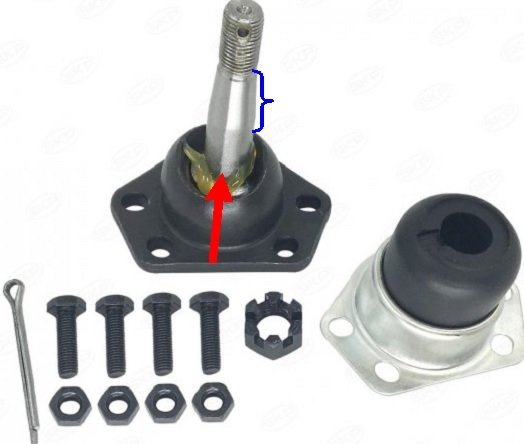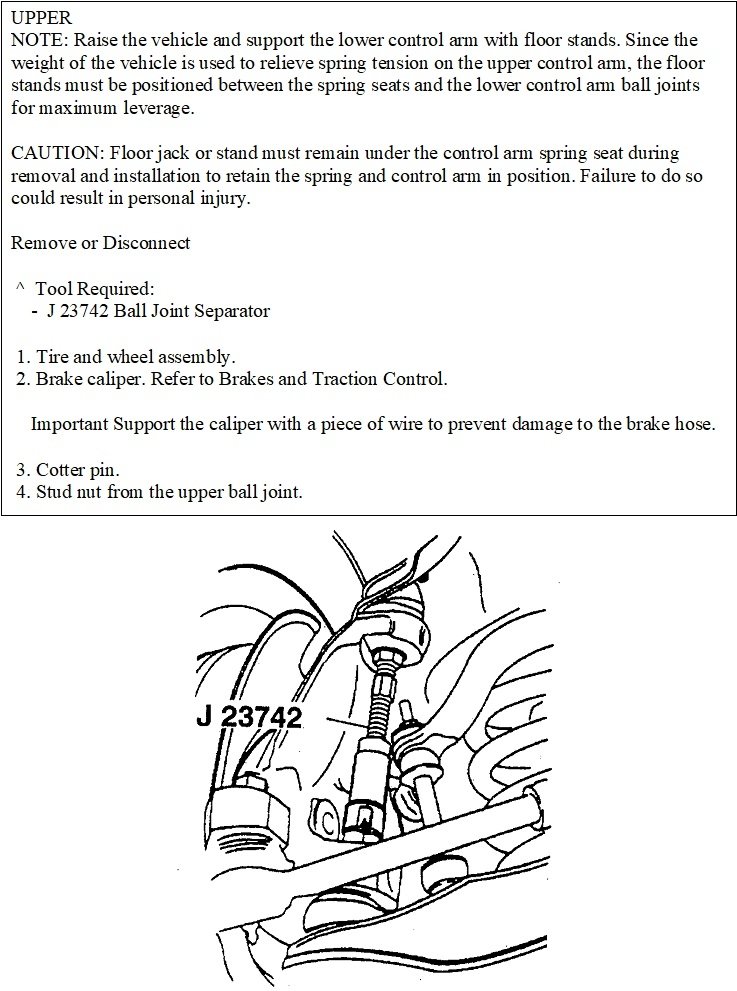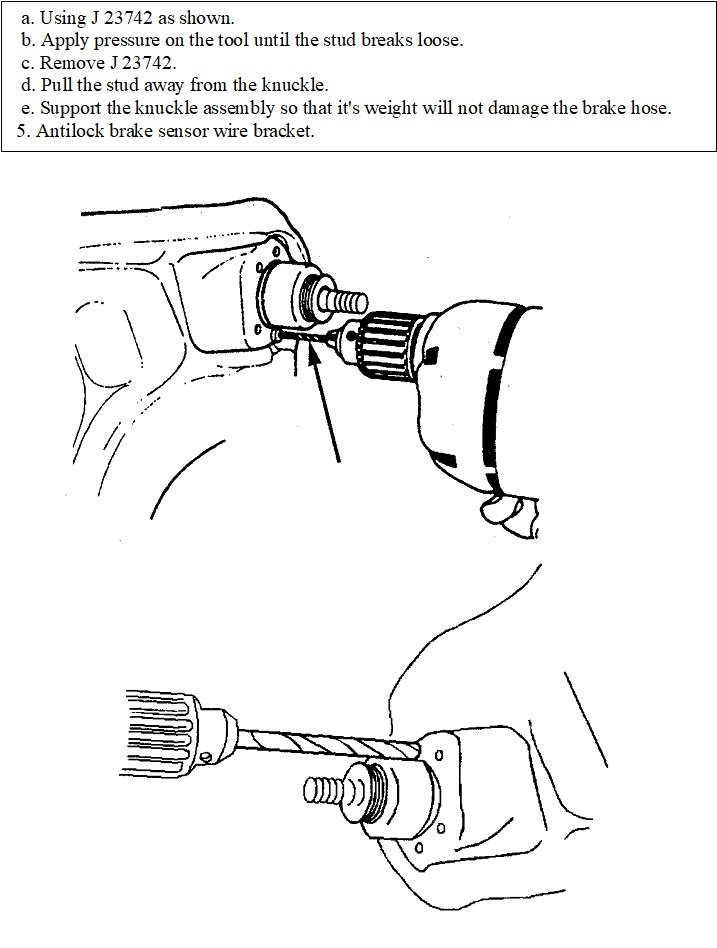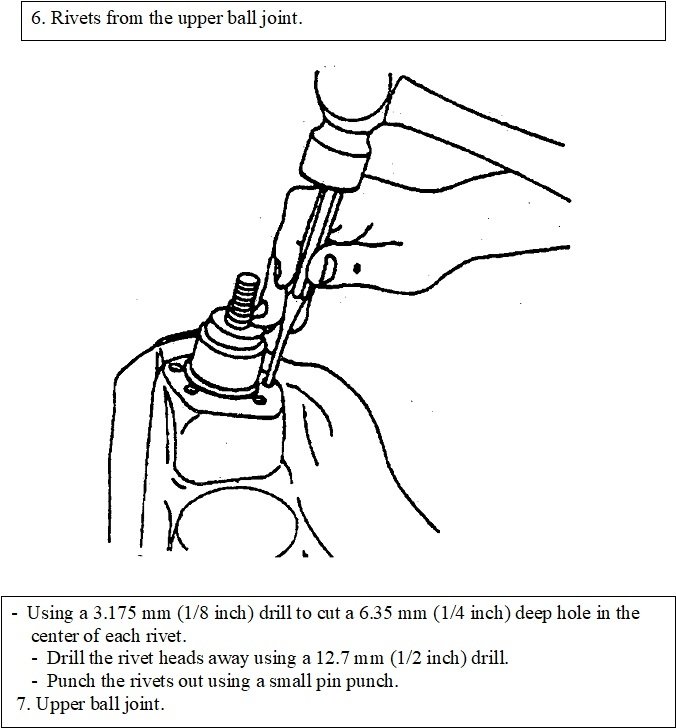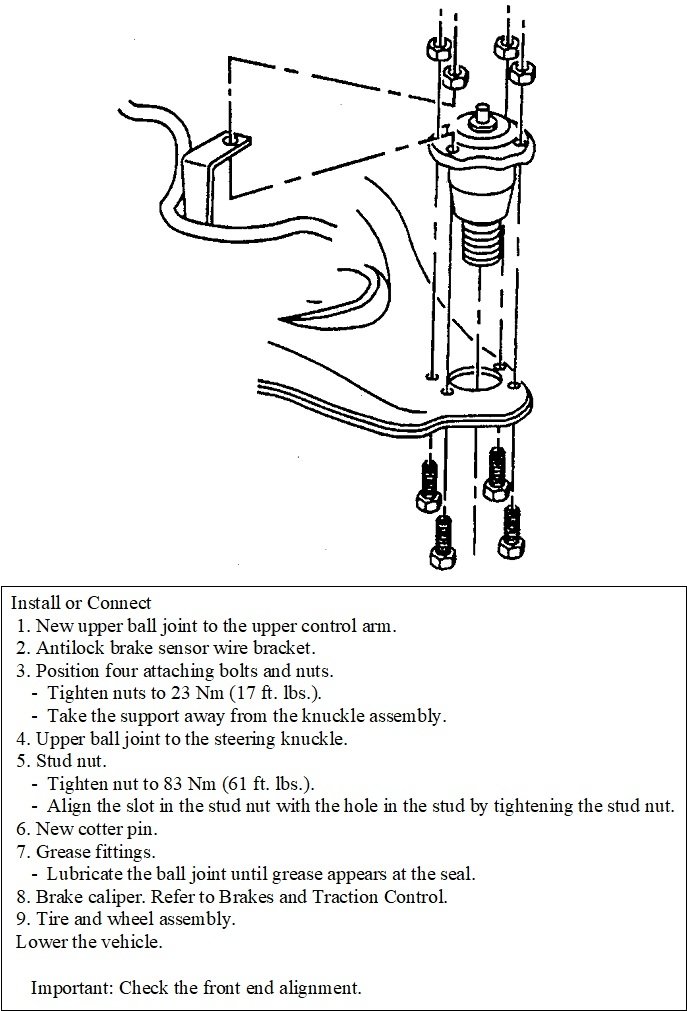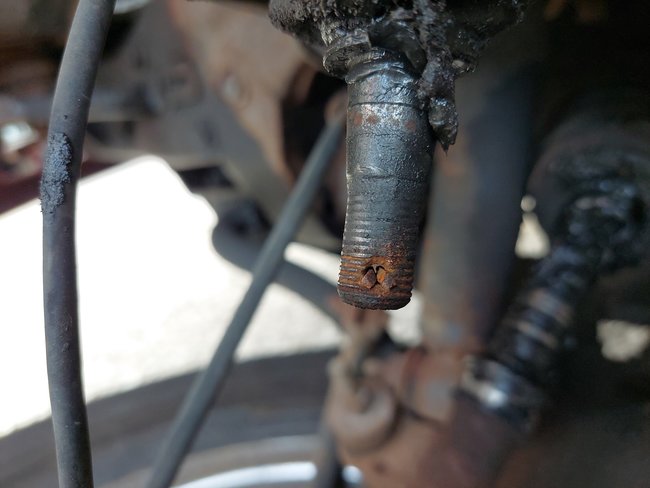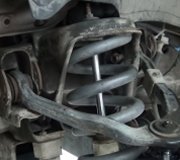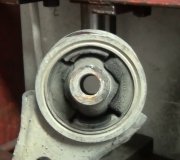Dandy photo. Thank you. The cotter pin looks too rusty for only 3,000 miles, unless you live in a state like I do where they throw a pound of salt on an ounce of snow. There's pitting too on the tapered part of the stud. Water had to get in to do that. This looks like the castle nut wasn't tight enough or it didn't pull the stud in far enough to wedge it tightly in place. Be sure to inspect the hole in the spindle for the same problem and replace it if you see that, otherwise the new stud will develop the same condition.
The miles you listed are about right for this vehicle. My coworker put on around 45,000 per year with his Blazer and we replaced the upper ball joints every two years for six years. That's way too soon considering these are "follower" ball joints. That means they don't hold up any weight of the vehicle. Their only job is to hold the spindle and wheel upright and in alignment. Your lower ball joints are the "load-carrying" joints, meaning they have the entire weight of the front of the truck trying to pull them apart, yet they'll last twice as long as the less-stressed upper joints. Of my last half dozen vehicles, I only replaced one ball joint. That was on an '88 Grand Caravan lower at 440,000 miles. The only thing that's worse than Blazer upper ball joints are those on Fords. Those vehicles scare me when one comes at me on the highway. I've seen way too many come in on a tow truck with wheels hanging one way or the other. Your Blazer joints do not have a reputation or known history of breaking or separating, just of causing a clunking noise and some minor tire alignment wear. I wouldn't be overly concerned about the first two you mentioned, especially since no special tools or muscles are needed now for the next replacements. I don't have a better answer for the 3,000-mile joint. I don't suspect a metallurgy or manufacturing problem. Once a company like Moog goes through all the work to design and manufacture a part, it costs them extremely little extra to make the part stronger than the originals and to address common issues. I attended a three-day school at their plant in St. Louis and got a tour of their research and development department. You can't imagine the testing their parts go through. Even if you were to buy the cheapest part you can find, no aftermarket manufacturer is going to go through all the expense of design, tooling, and production, then try to save a few pennies if it compromises quality. The only exception I'm too aware of is Ford original steering and suspension parts. As an example, on the '80s Ford-built Tempos and Escorts, outer tie rod ends last exactly 15,000 miles, and the "improved" parts through the Ford dealers' parts departments lasted, exactly 15,000 miles. Only the cheapest aftermarket tie rod ends we could find came with grease fittings and lasted as long as those on other car brands. We called those "killer" cars because so many people went into ditches or oncoming traffic when they lost steering control. One tie rod end even separated as the owner was turning into our parking lot. She never made it past the sidewalk. No other manufacturer has ever had such a huge problem with steering and suspension parts.
I don't know if this makes you feel any better, but there's a lot of car owners who would be happy to get 95,000 miles out of a replacement part.
The only other thing I can think of at this point is I had one in the mid '90s where I replaced the outer tie rod end, performed the alignment, then tightened the jamb nuts on the tie rods. Didn't realize I was tightening the nut against rust that had built up in the threads of the inner tie rod end, not against the outer tie rod end. As a result, the jamb nut wasn't tight enough even though I couldn't turn the parts by hand. Being less than full tightness allowed them to hammer back and forth on the threads with every bump in the road, until after a few months the threads had been worn off both parts and they almost separated. That was when I had been a suspension and alignment specialist for over ten years, and I should have known better, so you can imagine how something similar can happen to a competent do-it-yourselfer. Lucky for me the owner recognized the steering wheel had suddenly shifted off-center and brought it back right away.
Understand too when you find a really inexpensive replacement part, no smaller aftermarket manufacturer can handle the expense of redesigning and manufacturing a part for a safety system for such a relatively limited audience. Instead, they typically buy them in huge quantities from the big guys, like Moog, then put their own name on them. I've seen "inexpensive" engine gasket sets come with the FelPro name on them. One other case I'm aware of is if you buy a replacement fuel pump for a Chrysler product from the dealer's parts department or from Napa, they're the same part. Both Chrysler and Napa buy them from Carter, then they put their own names on the boxes.
The only other exception to my sad story is if there is indeed something wrong with your 3,000-mile joint, that didn't happen to just the one you got. They make thousands of them each day. If the mix of metals and additives was wrong, for example, it would affect a huge batch, there would be recalls, and the news media would be screaming about it. We got to find someone to blame, but I don't think it's the quality of the part. I've had other less-serious problems in the past, and I'm sorry to say they were usually the result of something I did wrong or didn't catch in the initial inspection, but I'll never admit that out loud.
If testing is performed on the old part, please let me know how they do that and what they find. It's always nice to learn something new.
Tuesday, August 16th, 2022 AT 5:57 PM
